 Soviet Union (1964)
Soviet Union (1964)
Missile Tank Destroyer – 220 Built
Introduction
During the Cold War, the Soviets began work on two designs for ATGM Raketniy tanks, literally meaning “Rocket Tanks”. One of the vehicles was the IT-1, based on the chassis of the T-62. Its designation was short for ‘Istrebitel Tankov’ (Истребитель Танков), literally ‘Tank Destroyer’, it was also known as the Object 150. Its competition was the Taifun 9M15, or Typhoon, also known as Object 287, based on the T-64.
Both of the vehicles took part in tests in 1964. The Taifun performed badly, its development being subsequently canceled. This cleared the way for the IT-I.
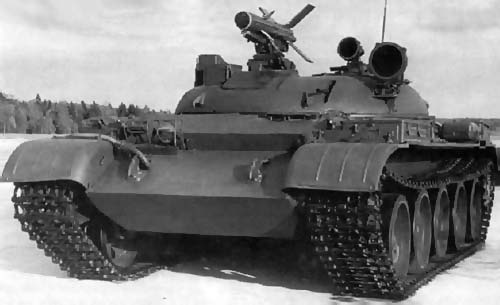
IT-1 promotional photograph – Source: Alternate Wars
Design
The hull and engine were taken straight from the T-62, without modification. 220 IT-1 vehicles were built. 60 of these were manufactured by multiple firms. 20 of these were built by the Uralvagonzavod factory in 1970.
The IT-1’s 3-man crew consisted of a driver, a gunner and a commander. The vehicle saw a very limited service between 1968 and 1970 in two battalions of the Carpathian and Belarusian military districts. The IT-1 featured a very unique, “Flattened-dome” turret, which housed its main armament, and a 7.62 mm PKT machine gun with a 2000 round supply.
The Drakon
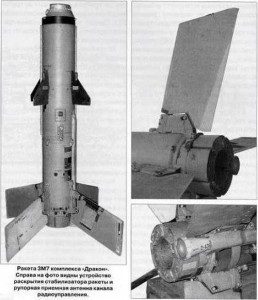
The IT-1’s main armament consisted of a 2KA ATGM launcher firing the PTUR 3M7 “Drakon” missile. The missile was radio-command guided, via the SACLOS (Semi-Automatic Command to Line-Of-Sight) guidance system. It could penetrate 250 mm (9.8 in) of rolled-homogeneous armor, angled at 60 degrees, at ranges up to 3300m.
The T2-PD and UPN-S night-vision equipment theoretically allowed night operation of the missiles. However, the missile’s effective range was substantially reduced in this situation. Day range was 300 to 3300m, night range, however, was a meager 400 to 600m
The firing sequence was thus: A small hatch would open in the roof of the turret. The rail, with the attached missile, would swing forwards. Once locked in position, the folding wings would open, at the same time shedding its protective casing. The missile was launched slightly upward, at an angle, in order to reduce the effect of any wind interference during the early stages of unguided flight. A tracer allowed the guidance system to track and transmit radio commands.
When fired, the guidance system used one of seven frequencies and two codes to prevent other IT-1 unit’s guidance systems interfering with each other’s missiles. There was a slight “dead-zone” around the vehicle, meaning that the missile traveled unguided for a few meters before receiving it’s radio commands.
The vehicle carried fifteen 3M7 Drakon missiles, twelve of which in an automatic loader, three more rounds were placed in an unarmoured container found on the rear of the turret.
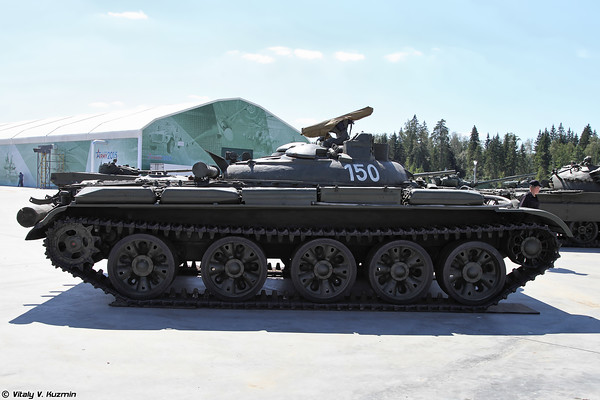
The IT-1 in profile at Patriot Park, Kubinka. Photo: Vitally V. Kuzzmin
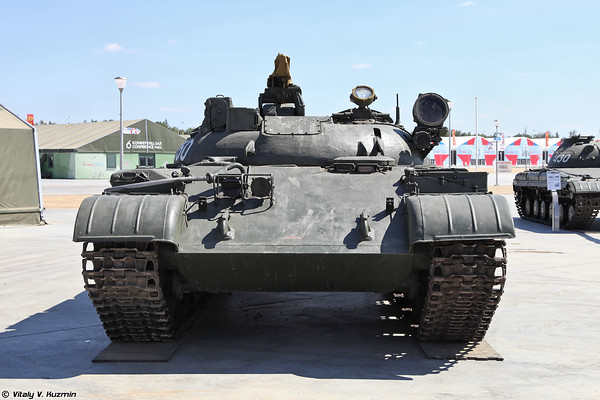
The IT-1 at Patriot Park, Kubinka, from the front, displaying its low profile. Photo: Vitally V. Kuzzmin
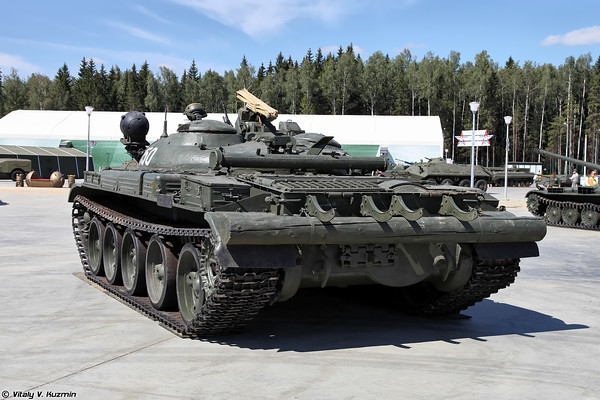
Rear of the IT-1 showing off the famous “Log” at Patriot Park, Kubinka. Photo: Vitally V. Kuzzmin
Fate
The 520 kg of guidance equipment required for the missile proved extremely impractical. This, coupled with the limited amount of ammunition carried, made it unpopular with its users.
The vehicle was soon withdrawn from service and the two units using them were disbanded. The IT-1 didn’t go straight to the scrap yard however, the vehicles eventually ended up being converted into the IT-1T partial ARV tractors. The only modifications were the fixed positioning of the turret, and the addition of recovery gear once the ATGM launcher had been removed. They were then converted again into the BTS-4V recovery vehicle.
For a time the vehicle sat in the Kubinka tank museum. It now sits in the Patriot Park at Kubinka.
An article by Mark Nash
IT-1 specifications |
|
| Dimensions | 6.63 oa x 3.30 x 2.8 m (21’9” x 10’9” x 9’1”) |
| Total weight, battle ready | 35.4 tons |
| Crew | 3 (driver, gunner, commander) |
| Propulsion | V-55A Diesel (580 hp) |
| Suspension | torsion bar |
| Speed (road) | 55 km/h (34.1 mph) |
| Armament | 2K4 ATGM System firing 3M7 “Dragon” ATGM 7.62 mm PKT coaxial machine gun |
| Armor | Hull: 102/79/46 mm (4.01/3.11/1.81 in) Turret: 206 mm (8.1 in) at the front, 100 mm (3.93 in) sides and roof |
| Total production | 220 |
Sources
Specifications of Russian missile tanks on the Big Book of Warfare
Information on a preserved IT-1
Missile Tanks on survincity.com
Soviet Propaganda video showing the IT-1 in testing
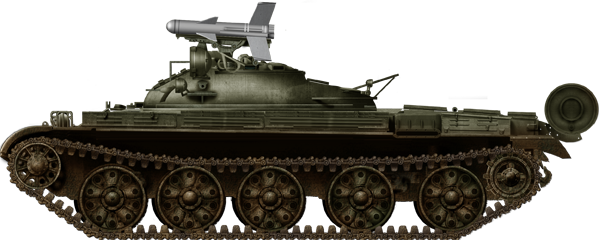
Tank Encyclopedia’s own Illustration of the IT-1 by David Bocquelet.

9 replies on “IT-1”
First my congratulations for this amazing post. I’m quite courious about this post is somehow related with the game “War thunder” because in the last update this tank hunter was released.
Once more congratulations. I really like this page
Thank you Esto. Indeed it was, we try to keep up as best we can.
Hi MarkNash,
In the information of the IT-1 it says that the range of the Drakon was 300 to 3000 in daylight and 400 to 600 at night.
Is the 300/400 meter minimum distance of firing?
In WT they can kill you leaning against you and that seems a bit impossible i think.
Is there info on the minimum distance of firing?
Well War Thunder’s sats and physics should not be relied upon for authenticity by any means. The missiles could kill at point blank, but they cant be guided for a few meters. Yes I would say that is a minimum effective distance.
– TE Moderator
Hello! 🙂 MarkNash, regarding the 3M7 Drackon….how volatile would you say the fuel of the missile would be upon a direct hit from a APDS shell from a tank gun of the same time period (L7A3, M68) and do you know if it is sold fuel or liquid?
Hello there, (I recognise the name by the way) I would say that until the missile was launched and activated it was relatively inert, and I would suggest solid fuel as its less volatile.
– TE Moderator
So if solid fuel is harder to ignite…how do they fire of the missile? I have seen youtube videos of people that ignite solid fuel with a match? (I know the ingredients will be different) I find it hard to believe that red hot fragments shot into a fuel source (ammo rack) would not ignite it.
Really COOL equipment, the sequence in which the missile pops up from the hull is almost magic. The M60A2 soviet version. Atleast, less costly.
15 missiles seems like plenty. I’m fond of specialized equipment and tanks like these would be great as force multipliers. However, Warsaw pact did not had much use of such equipment. It would had fared better in deserts like Saudi Arabia than in Europe where typical distances were about 1,5 km.
Food for thought. Place such vehicle defensively in areas with long line of sight. A single such vehicle could effectively engage Warsaw pact tanks while they would struggle to return fire effectively. First due to greater than maximum range. Secondly, lack of penetration.
Its downsides were more of a personal taste of an user. Half a ton of guidance equipment is nothing on a tank. 15 missiles are plenty for a battle. Many nations had developed similar vehicles, but on a lot lighter chasses AND they were a lot flimsier than this tank. It is all the matter of a perspective and perceived needs of a user.